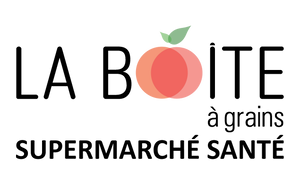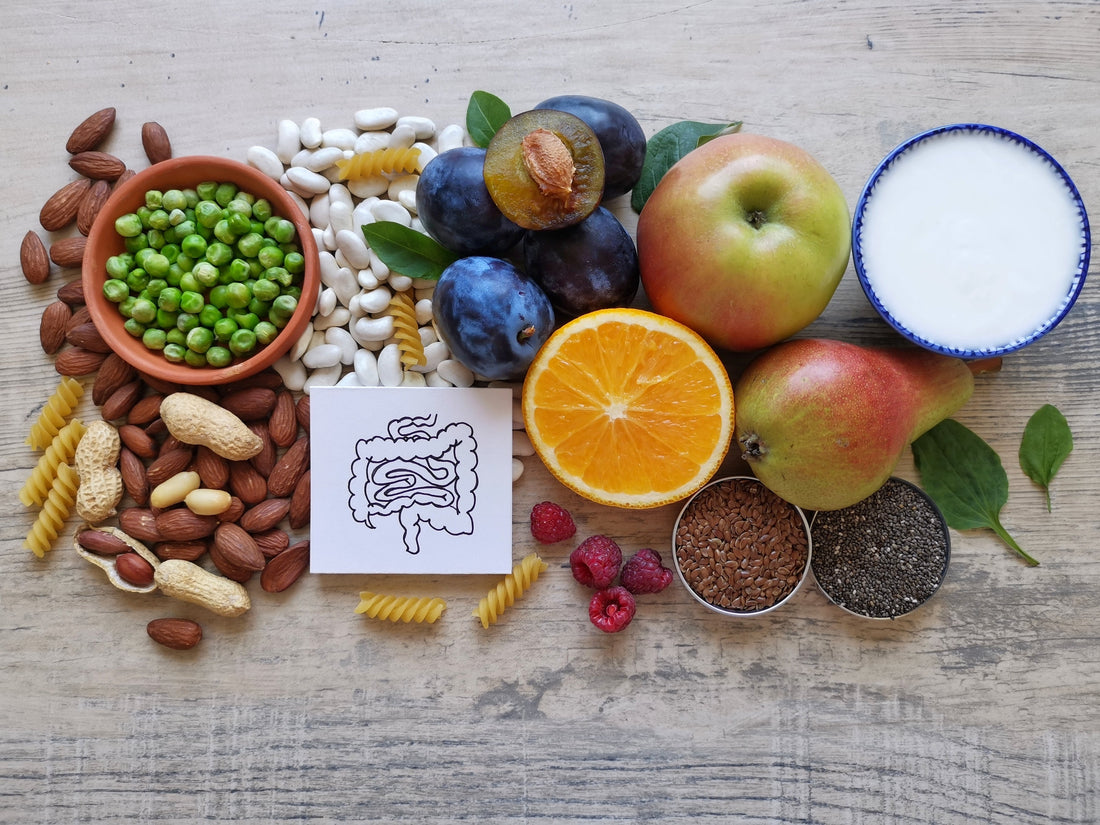Introduction
We often hear that fibre is good for our health… but what does that really mean? And more importantly, how can you easily incorporate it into your diet without completely changing your habits?
Dietary fibre—found in fruits, vegetables, whole grains, and legumes—plays a vital role in our well-being. It helps digestion, supports gut microbiota health, regulates blood sugar, and contributes to better satiety throughout the day.
Whether you're looking to improve your digestion, maintain your weight, or simply make healthier choices, adopting a high-fibre diet is a great place to start. In this article, discover the best foods to choose, practical tips for incorporating fibre into your meals, and common mistakes to avoid to get the most out of its benefits.
Why is fibre essential for health?
Dietary fibre is essential for health because it regulates bowel movements, feeds the gut microbiota, and helps prevent many chronic diseases.
It plays a key role in digestion by promoting healthy intestinal function, helping to prevent constipation or bloating. In addition, some types of fibre—called “soluble fibre”—help stabilize blood sugar levels and lower cholesterol.
But the benefits go beyond digestion. A high-fibre diet is also associated with a reduced risk of cardiovascular disease, type 2 diabetes, and even certain cancers, particularly colorectal cancer.
By nourishing the good bacteria in our gut, fibre also strengthens our immunity and overall balance. That’s why increasing your fibre intake is a simple yet powerful step toward improving your long-term health.
Which foods are naturally high in fibre?
To enjoy all the benefits of fibre, it’s important to consume it daily—ideally at every meal. The key is to vary your sources: combining whole grains, legumes, fruits and vegetables, and nuts or seeds helps meet your needs while diversifying your diet.
Whole grains: an essential source
Whole grains retain their outer layer, which is rich in dietary fibre. They're easy to include in your daily meals:
- Oats for breakfast (as flakes or porridge)
- Brown rice or quinoa as side dishes
- Whole grain bread instead of white for toast or sandwiches
Try replacing refined grains with whole versions at each main meal.
Legumes and their many benefits
Legumes are an excellent source of both soluble and insoluble fibre, and they also provide plant-based protein:
- Lentils, chickpeas, red beans can be added to salads, soups, or stews
- Eat them at least 2 to 3 times a week to reap the digestive and metabolic benefits
Fruits and vegetables to prioritize
Some fruits and vegetables are particularly high in fibre:
- Raspberries, pears (with skin), apples, figs for snacks or desserts
- Broccoli, artichokes, carrots, spinach in cooked dishes or raw in salads
Aim for at least 5 servings of fruits and vegetables per day, mixing raw and cooked options.
Nuts and seeds: small but powerful allies
In addition to healthy fats, nuts and seeds deliver a good dose of fibre:
- A small handful of almonds, walnuts, or hazelnuts as a snack
- A tablespoon of chia seeds, ground flaxseed, or sunflower seeds in yogurt, smoothies, or salads
Add them daily in small amounts to enrich your meals without burdening digestion.
4 practical tips to adopt a high-fibre diet
- Introduce fibre gradually to avoid bloating.
- Stay well hydrated—water helps fibre work effectively in the body.
- Vary your sources: mix whole grains, veggies, fruits, legumes, and seeds throughout the day.
- Favour homemade meals: processed foods are often low in fibre, even if they're labelled “vegetarian.”
4 mistakes to avoid with fibre
- Going too fast: a sudden increase in fibre can cause digestive discomfort.
- Skipping water: without enough fluids, fibre may cause constipation instead of preventing it.
- Focusing only on “insoluble” fibre: soluble fibre (from legumes and fruits) is just as important for digestive and metabolic health.
- Thinking fruit juice is enough: whole fruits always contain more fibre than juice, even fresh-pressed.
FAQ – Everything you need to know about fibre in your diet
What is the recommended daily intake of fibre?
Health authorities recommend 25 to 30 g of dietary fibre per day for adults. You can reach this amount by including fibre-rich foods like vegetables, fruits, whole grains, and legumes at each meal.
Do children also need to eat a lot of fibre?
Yes, but in amounts adapted to their age. A general guideline is their age + 5 grams of fibre per day (e.g., 10 g at 5 years old). A balanced diet with fruits, vegetables, and whole grains usually covers these needs.
Do fruit juices contain fibre?
No, or very little. Both store-bought and fresh fruit juices are low in fibre because the pulp is often filtered out. For true nutritional value, it’s better to eat the whole fruit.
Can you eat too much fibre?
Yes. Consuming more than 50 g/day of dietary fibre can cause digestive issues like bloating and may even interfere with nutrient absorption. It’s important to increase fibre gradually and drink plenty of water.
How do I know if my diet is high enough in fibre?
If your diet includes fibre-rich foods at each meal (whole grain bread, vegetables, fruits with the skin, legumes), your digestion is regular and your energy is steady, that's a good sign. Otherwise, a nutrition professional can help you adjust your intake to support your daily health.
Conclusion – Adopting a high-fibre diet: a simple step for better health
Incorporating more dietary fibre into your routine is one of the simplest and most effective ways to improve your overall health. By promoting digestion, regulating blood sugar, supporting bowel function, and aiding in satiety, fibre-rich foods play a central role in your body’s optimal functioning.
Whether through whole grains, legumes, fruits and vegetables, or nuts and seeds, every meal is an opportunity to boost your fibre intake. Start gradually, vary your sources, and listen to your body to reap all the benefits.
A high-fibre diet is much more than a trend—it’s a solid foundation for preventing many diseases and living a healthier life, day after day.


